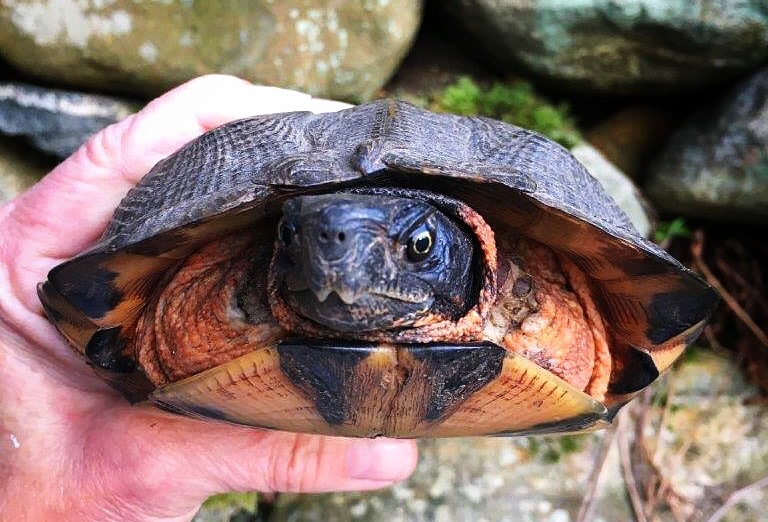I am often asked why I chose to rehabilitate turtles. The answer is simple: they need the help. Sure, I have always loved these animals, but most crucially, with five out of eight Connecticut species listed as endangered to some degree, this is where the ability to save a life makes a huge difference.
Yes, one life. Earning a place on the list of Special Concern, Threatened, and Endangered Species isn’t just a matter of sheer decline in numbers; it has just as much to do with the viability of populations within a given species. There may still be a significant overall quantity of box turtles, for instance, but if they are scattered across many tiny, fragmented groups, each with few breeding adults and no opportunity to recruit new members, the loss of even one turtle can spell the end of its entire community.
That’s why it’s so important to know which species of turtle you encounter and to report its location to the DEEP if it’s one of the five listed species (Eastern Box Turtle, Wood Turtle, Spotted Turtle, Diamondback Terrapin and Bog Turtle), to NOT euthanize without giving every injured animal a chance, and to take earnest measures to do what you can to protect every animal if you live in proximity to one of these populations. Keep a natural buffer zone—as large as you can manage—around all wetlands, and never fill them. Raise mower blades to 3 inches, sweep lawns and fields for reptiles before mowing and weed whacking (remember that juveniles are small), and mow from the center outwards to give them a chance to escape towards the edges. Never take a wild turtle home as a pet, and never move one to a “better” location—that’s as good as killing it, and it often does. Never release a pet turtle into the wild; you risk spreading disease that can wipe out a wild population. Post Turtle Crossing signs from mid-May to mid-July on roads where you know turtles cross. And get any injured animal to a rehabilitator or vet who has solid experience with that species—turtles are not one size fits all, and listed species can be especially complicated.
The wood turtle in this photo was found having recently lost both her front legs in a field that is mowed a few times a summer. She was able to push herself along like a skid, using her hind legs, but her prospects are not good. She could easily be drowned during mating or unable to extricate herself from underwater hibernation among the tree roots. It takes a wood turtle at least 10 years to reach maturity and be able to reproduce. If this animal was the only surviving adult female left in her population, her demise would likely mean the collapse of that population.
With human life feeling more precarious than ever, perhaps we have a new-found sense of what it means to be an endangered species. If so, let’s put some of that empathy into action and flatten the curve of extinction for these incredible beings.


